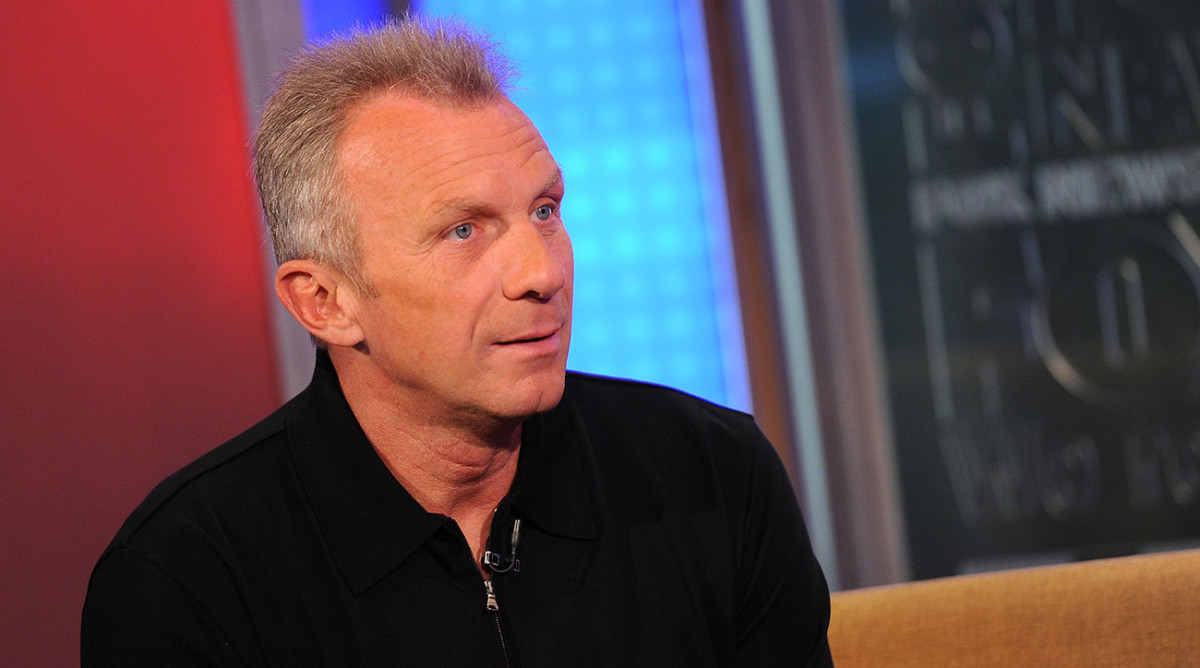Joe Montana’s heart disease scare has pushed him to stay fit after retirement
When Joe Montana climbs on his bike and cruises past the San Francisco waterfront or down the fragrant trails of California wine country, he is no longer motivated by the same factors that pushed him to become one of the greatest NFL quarterbacks of all time. At 60 years old, Montana is not training to run the fastest or throw the farthest or react the quickest. Now, all the effort that went into protecting the football for more than 15 years has shifted to a new endeavor: protecting his heart.
In 1996, 40-year-old Montana walked out of his doctor’s office shaking his head thinking, “No way. They had to have made a mistake.” It had been two years since his retirement, two years in which he hadn’t performed any sort of vigorous exercise, and he had just been diagnosed with two major indicators for heart disease—high blood pressure and high cholesterol.
“I just never thought it would affect me,” Montana says. “So the first time I told them I didn’t believe it.”
It wasn’t until his next appointment that the reality of his diagnosis sank in. With his physical activity level near a personal all-time low, his soaring blood pressure and cholesterol levels and his family history of heart disease (his mother had the disease and two uncles suffered heart attacks), Montana was at risk for having a heart attack or a stroke if he didn’t change something, fast.
“Heart disease is the No. 1 killer of all Americans,” says Dr. Suzanne Steinbaum, a New York City cardiologist and spokesperson for the American Heart Association. “I think that people are aware [of the disease’s prevalence], but I don’t think people are aware of how much it is in our control. That it’s really about prevention, and that if we change our lifestyle, if we exercise, if we diet, if we don’t smoke, that we can actually prevent this disease.”
The Comeback Kid was never one to back down from a challenge, and preventing heart disease from taking over his life was no exception. Shortly after his diagnosis, Montana joined his wife, Jennifer, in exploring healthier eating habits and increasing his level of physical activity.
“She’s always been a healthier eater than myself, and we’d always exercised on a daily routine, until I retired,” Montana says. “Then I took a year or two off that I probably shouldn't have without knowing the effects of heart disease and how quickly things can change for you.”
Training after 50: How Doug Flutie keeps in shape and manages post-football pains
With Jennifer’s encouragement, and in accordance with the advice Steinbaum gives her patients, Joe began to make small lifestyle changes to becoming more heart healthy.
“Taking those small steps is ultimately how to change things,” says Steinbaum. “You can’t go from being sedentary and living on sugars and fats to all of a sudden the next day becoming an Ironman. It doesn’t work like that. So the best thing to do is to make goals that are small that allow you to accomplish [them] in order to ultimately be able to change your life.”
For Montana, one of the biggest small changes was pushing away the salt shaker. “I love salt, which is the hardest thing to get away from,” he says. “Jennifer doesn't use any salt. In the compromises there, usually she wins.”
According to the AHA, expelling the water retained by the body when it ingests too much salt can put undue pressure on the heart, which leads to high blood pressure. For people looking to keep their blood pressure steady, the AHA recommends no more than 2,300 milligrams (or one teaspoon) of sodium a day, which is over one thousand milligrams less than the amount of sodium the average American eats in a day.
Limiting his salt intake was accompanied by slimming down his portion sizes, slowing down while eating and introducing fresh fruits and vegetables into his diet that Montana would have previously passed over for salty potato chips and fatty red meats.
As Montana’s diet changed, so did his exercise regimen. Though arthritis in his elbow, knees and hands plus multiple knee, neck and back surgeries prevent him from hitting the gym in the same way that earned him eight trips to the Pro Bowl, four Super Bowl rings and two MVP awards, he is much more active now than he was in the two years following his retirement.
The 7 best health and wellness books of 2017
To limit the impact on his balky joints, Montana turns most often to cycling, whether outside or on an indoor stationary bike. He will also add in exercises as simple as taking a walk or climbing the stairs, which is no small feat considering his San Francisco apartment sits on the 41st floor.
“You just have to move,” Steinbaum says of the ideal exercise regimen for someone focused on heart health. “Moving is better than sitting.”
The AHA recommends at least 150 minutes per week of moderate intensity exercise, which breaks down to 30 minutes of activity five days a week.
“We’re not even talking about going to the gym and getting so short of breath and your heart rate up [so high] that you can’t even speak,” Steinbaum says. Going for a walk, taking a jog or riding a bike all suffice, as long as the activity raises the person’s heart rate.
The two-year break from exercise that Montana took following his retirement was not a decision unique to him. Steinbaum has noticed this trend among many former professional athletes, making them a group that could be particularly at risk for developing heart disease indicators. (It's also why Montana was chosen as the face of a heart disease campaign from Amgen and AHA.)
“It’s an important group because as much activity as they did in their lives, very oftentimes after it’s over they stop, and I don’t blame them,” Steinbaum says. “That’s rest time, but they really need to get their hearts checked and make sure they don't have those risk factors for heart disease.
“Just because they were athletes doesn’t make them immune after they’re not playing anymore.”
For Montana, serving as a living example of that heart-healthy lifestyle for his children has been the driving force in his motivation to get healthier. In addition to Joe’s family history of heart disease, Jennifer’s father passed away at 60 years old after suffering a severe heart attack, meaning the four Montana children have inherited an extensive record of the disease.
But just because they have a history of heart disease, doesn’t means they are doomed to contract it. Steinbaum notes that in 80% of cases, the disease is preventable if people get themselves checked for risk factors and are willing to embrace a healthy lifestyle.
More than 20 years after his original diagnosis, Montana’s football-battered body might not be able to perform like it once did, but his heart is healthier than ever.
“It’s no secret that professional football can be hard on your body,” Montana says. “But I’ve been able to remain in good health because I exercise daily.”







